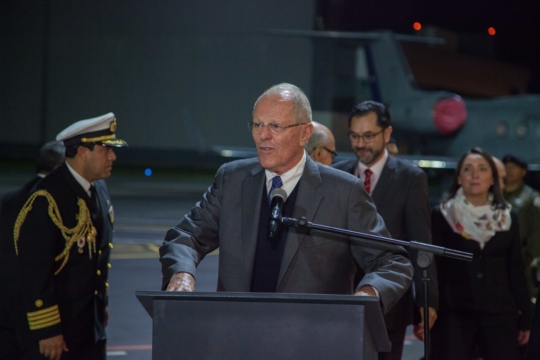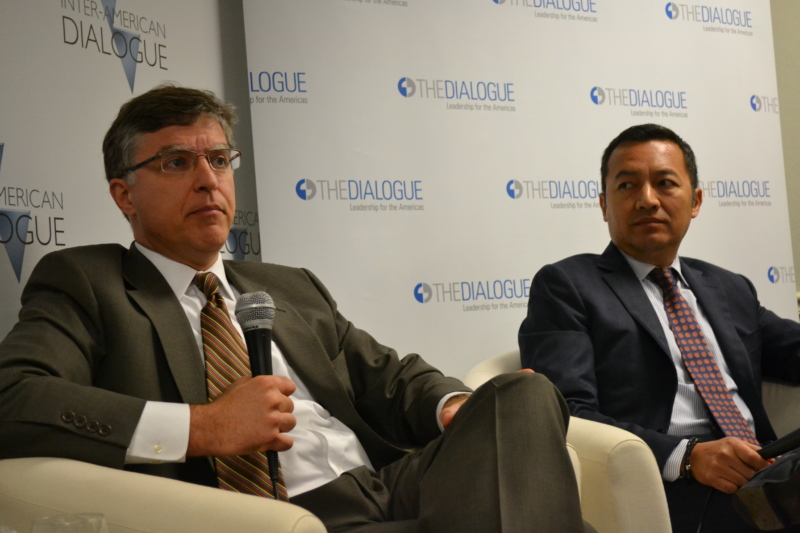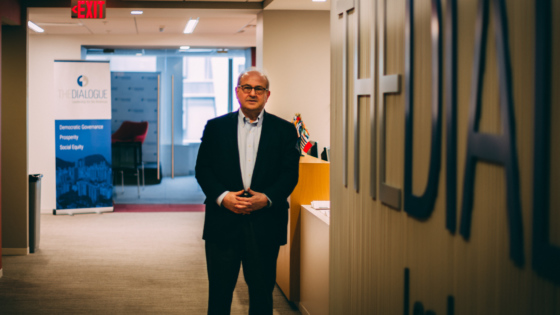
¿Cómo ven los inversionistas al Perú tras el indulto a Fujimori?
Michael Shifter advierte sobre la posible repercusión de la crisis política en la economía peruana.
A day prior to PPK’s swearing-in as Peru’s president, the Inter-American Dialogue held an event to discuss the political and economic outlook for the country under Kuczynski’s government. Marcello Estevão, mission chief for Peru at the IMF, and Luis Oganes, Global Head of Emerging Markets Research at JP Morgan Chase, presented their views to describe what they saw as a positive change for Peru.
The discussion’s three main focal points were economic questions for Peru’s future, their related social challenges, and PPK’s political obstacles ahead of implementing his policies. In the economic context, the country is still experiencing high growth rates, but also low levels of confidence and trust in institutions as well as high levels of informality. Meanwhile, issues of crime and citizen security top the list of social concerns. After the country – and probably the region’s- closest elections, PPK will have to face a large Fuerza Popular fujimorista majority in congress. The leftist Frente Amplio, party led by Veronika Mendoza – who came in behind PPK in the election’s first round – also holds more congress seats than Peruanos Por el Kambio.
Luis Oganes on Kuczynski's pragmatic inclinations #PresidentPPK pic.twitter.com/ziaaErYBdK
— The Dialogue (@The_Dialogue) July 27, 2016
In light of such contextual information, Luis Oganes opened his remarks by describing PPK’s political position as center-right and “pragmatist”, without a particular preference for the private or public sector insofar as someone can get the job done. Oganes described Kuczynski’s cabinet as “very solid”, highlighting the presence of Fernando Zavala and Alfredo Thorne.
In terms of PPK’s political challenges, Oganes waned down the threat of a fujimorista-led congress, arguing that Fuerza Popular has a vested interest in restoring congress’ respectability and effectiveness given Keiko Fujimori’s permanence in politics and the possibility that she might run in 2021. More concerning, in his view, is Mendoza’s Frente Amplio, which supported PPK in the campaign in order to vote against Fujimori but will counter any reforms that might threaten its social agenda.
PPK already has several reforms in mind and plans to ask congress for extraordinary powers for the first two months of his term in order to pass them. Such reforms include a law of fiscal transparency, an unemployment insurance scheme, and legislation for fiscal simplification. The fujimorista segment of congress, however, has already declared itself in opposition to PPK’s proposals to reduce the country’s Value Added Tax and to give tax cuts to businesses that reinvest their profits, saying they would constrain the fiscal budget and favor big businesses. As a result, fujimoristas might force such proposals to go through regular channels in congress rather than pass through extraordinary paths.
In spite of any opposition that PPK might encounter in congress, his government will still push for its key proposals, such as big improvements in infrastructure by restarting stalled projects like Lima’s airport renovation and metro expansion. While his plans don’t specifically tackle environmental issues, he does plan to promote access to water systems.
In the short term Peru can expect around 4% growth, slightly less in the long term -Marcello Estevão #PresidentPPK pic.twitter.com/4wOC35bGOS
— The Dialogue (@The_Dialogue) July 27, 2016
Marcello described how tackling the high levels of informal economic activity (around 70%) will pose another key challenge for PPK’s administration. He saw such levels of informality as a disincentive to investment in human capital, given the fact that informal workers have no guarantee that progress in their labor will bring improved returns. While Minister Thorne plans to reduce the VAT to indirectly reduce informality by promoting economic activity, Estevão doesn’t believe this is necessarily the right way to achieve such a goal. Instead, an increase in the Value Added Tax would be preferred in order to lower the cost of firing, hiring, and of doing business; pushing instead for more labor market reform, something that might be politically tricky to implement for Kuczynski.
Aside from the problem of informality, the Peruvian economy has recently experienced positive supply shocks and sound macroeconomic management. There has been a significant reduction in public debt (now around 24% of GDP), the poverty rate has been cut by more than half since the early 2000s, and inequality has also been reduced. Despite a slowdown in commodity prices and economic growth in 2014, causing a worsening in fiscal accounts due to fiscal expansionary policies, growth forecasts for 2016 and 2017 remain strong: 3.7% to 4% for 2016, and 4.2% to 4.5% for 2017, with a fiscal deficit of 2.1% or lower. Looking into the future, an average growth rate of 3.5% is expected for the long-term. The optimistic economic scenario means that Peru is likely to close its output gap (the gap between its actual economic production and its economic potential) by 2017. In order to fully be able to accomplish such economic potential, however, the country must deliver project results – both at the central and the municipal level, where inefficiencies abound – to allow for an increase in investment.
After stating their thoughts, Estevão and Oganes answered questions from the audience, including one that shed light on the fact that many Peruvians still express discomfort and pessimism even as the economy heads in the right direction. In response to this, Oganes signaled that inequality and relatively low standards of living are still a reality for many Peruvians and that their frustration stems from the lack of quality and results seen in the public services and institutions that surround them. PPK’s technocratic and results-oriented profile might help make his presidency stand out in this regard, and contribute to a more positive sentiment towards politics amongst Peruvians.
Michael Shifter advierte sobre la posible repercusión de la crisis política en la economía peruana.
El presidente del Diálogo Interamericano cree que no hay razones que justifiquen que Donald Trump no acuda a Lima para limar asperezas con el continente.
 Ben Raderstorf / The Inter-American Dialogue
Ben Raderstorf / The Inter-American Dialogue
